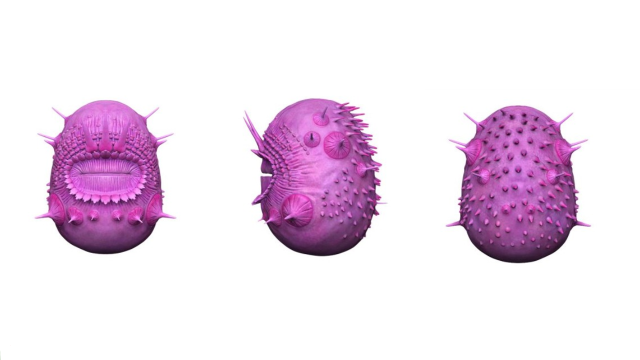Researchers have now solved the mystery of the Saccorhytus coronarius, a half-billion-year-old creature with a mouth but no anus.
Surely not having an anus complicates things, but it has a scientific explanation.
As originally reported by the BBC, the creature was a member of the deuterostomes family up until now, as it’s now being considered a member of a different family.
X-ray analysis of creature samples found that it actually better belongs to the Ecdysozoa family, the ancestors of spiders and insects, according to a research paper published in Nature.
But despite its reclassification, its lack of an anus isn’t in good company. After all, most members of the Ecdyzosoa family have an anus, so why doesn’t the Saccorhytus?
“It could be that it lost it during its own evolution – perhaps it didn’t need one because it could just sit in one spot with one opening for everything,” Saccorhytus researcher Emily Carlisle told the BBC.
However, it was not for its missing anus that the Saccorhytus was moved from one family to another. The X-ray tests that researchers performed revealed that the holes around its mouth were likely for spines that had snapped off, and not pores for use as gills as previously thought, commonly associated with deuterostomes creatures.
“We believe these would have helped Saccorhytus capture and process its prey,” said Huaqiao Zhang from the Nanjing Institute of Geology and Palaeontology. The spines would have helped the Saccorhytus stay in place in the ocean.
Alternative families were considered for the Saccorhytus, including corals, anemones and jellyfish. These creatures also feature a mouth but no anus.
“To resolve the problem our computational analysis compared the anatomy of Saccorhytus with all other living groups of animals, concluding a relationship with the arthropods and their kin, the group to which insects, crabs and roundworms belong,” added Professor Philip Donoghue from the University of Bristol’s School of Earth Sciences.
Research into the Saccorhytus gives us information on how the anus developed (and in some organisms, didn’t develop). Moving the creature to another family gives the research new context, and could inform the research of other organisms.
Also, I know you are very curious about how it gets rid of its waste. It’d flow out the mouth, “rather undesirably”, as the University of Bristol notes.
You can read the paper in Nature.
